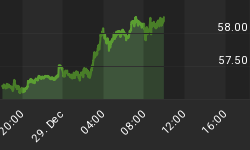Advocates of government stimulus are running victory laps on recent developments that appear to vindicate their strategy. In particular, Paul Krugman compares the sluggish growth in Europe to the somewhat-less-sluggish growth in the US to prove that stimulus was more effective than austerity. Other economists are using government inflation measures to defend Fed Chairman Bernanke's easy-money policy. The only problem is, they're calling the race before the finish line is even in sight.
As usual, Paul Krugman overlooks basic economics (which, despite his Nobel Prize, is a science about which Mr. Krugman really knows very little). The reason stimulus is so politically popular is that it appears to work in the short-term. However, appearances can often be deceiving, as they are right now in the US. Stimulus merely numbs the pain of economic contraction, as the underlying trauma gets worse. Austerity might slow an economy down, but at least the wounds are able to heal. America has chosen the former and Europe the latter, albeit not quite as large a dose as needed. The fact that in the short-run Europe is suffering more than the US does not vindicate Washington's approach. On the contrary, this is exactly what is to be expected.
What we're seeing is like a race where each runner has a broken ankle. One has a coach who tells him to pace himself and not worry so much about winning this one, while the other coach gives his runner a shot of painkillers and tells him to give it all he's got. Of course, early in the race, the doped-up runner is going to be flying down the track like nothing's wrong, while the other runner might be limping at half his normal speed. However, when the drugs wear off, the sprinter is liable to collapse from pain, leaving the better-coached runner to limp across the finish line.
The true test is not the immediate effects of stimulus or austerity, but the long-term results. For that reason, Krugman's conclusions are meaningless. The apparent success of stimulus simply results from spending more borrowed money on government programs and consumption. But don't we all agree now that this is exactly what caused the financial crisis in the first place?
As far as inflation is concerned, a vindication of Federal Reserve Chairman Ben Bernanke is equally premature. First of all, it's not that Quantitative Easing will lead to inflation; it's that QE is inflation. Secondly, there is a lag between QE and rising consumer prices, so the jury is still out as to how high consumer prices will ultimately rise as a result of current and past Fed policy mistakes.
But even more fundamentally, it is absurd to look solely at government price measures, which are built to understate inflation, and conclude that QE has not already produced an elevated cost-of-living. For example, the 2.4% rise in the Personal Consumption Expenditure (PCE) Index in 2011 is more of an indictment of the accuracy of the index than a vindication of Bernanke. In fact, of all the ways the government purports to measure inflation, the PCE is perhaps the most meaningless, as it relies on built-in mechanisms like goods substitution to hide a lower standard of living. As an example of how this works, imagine you are used to eating farm-fresh butter but have to switch to cheaper but also less-healthy margarine from a factory; the PCE would say you are no worse off. That's exactly why the Fed chooses to use this uncommon metric.
Mark Gertler, an economics professor at New York University, argues that even the Consumer Price Index, which rose at a more vigorous 3.2% in 2011, proves Bernanke's critics wrong. According to Gertler, the CPI has risen at an average annual rate of 2.4% thus far under Bernanke's tenure, significantly less than the 3.1% average under Alan Greenspan, and the 6.3% under Paul Volcker. However, Gertler overlooks two key points. First, the methodology used to calculate the CPI was much different during the Volcker era. If we still calculated the CPI the way we did then, the numbers would be much higher for both Greenspan and Bernanke. Second, given the huge economic contraction that has taken place under Bernanke, consumer prices should have fallen - significantly. The fact that they rose anyway indicates tremendous inflation.
Of course, the Fed's ability to stimulate the economy with inflation only works as long as bondholders remain ignorant of its plan. For now, the seemingly hopeful news reports are giving the Fed cover to keep stimulating. As long as the market remains convinced there is no inflation, the Fed can continue to create it. However, once the effects are so pronounced that even the PCE can no longer hide them, the Fed will be in a real bind.
Think of our two runners again. Even after the race is over, the fellow who chose to dope up likely injured himself even further. He might have even ended his career. So, the early dash and the cheer of the crowd in that one race was clearly not worth the many years of misery he would incur in the future.
Regardless of what the triumphant Keynesians would have you believe, my analysis continues to be that the current combination of monetary and fiscal stimulus is driving us toward disaster. Instead of a real recovery, the US will experience an inflationary depression. Europe, on the other hand, will suffer much less, precisely because it was not seduced by the short-term appeal of stimulus.
New Special Report: For an in-depth look at the prospects of international currencies, download Peter Schiff's and Axel Merk's Five Favorite Currencies for the Next Five Years.
Subscribe to Euro Pacific's Weekly Digest: Receive all commentaries by Peter Schiff, John Browne, and other Euro Pacific commentators delivered to your inbox every Monday.
For a great primer on economics, be sure to pick up a copy of Peter Schiff's hit economic parable, How an Economy Grows and Why It Crashes.
















